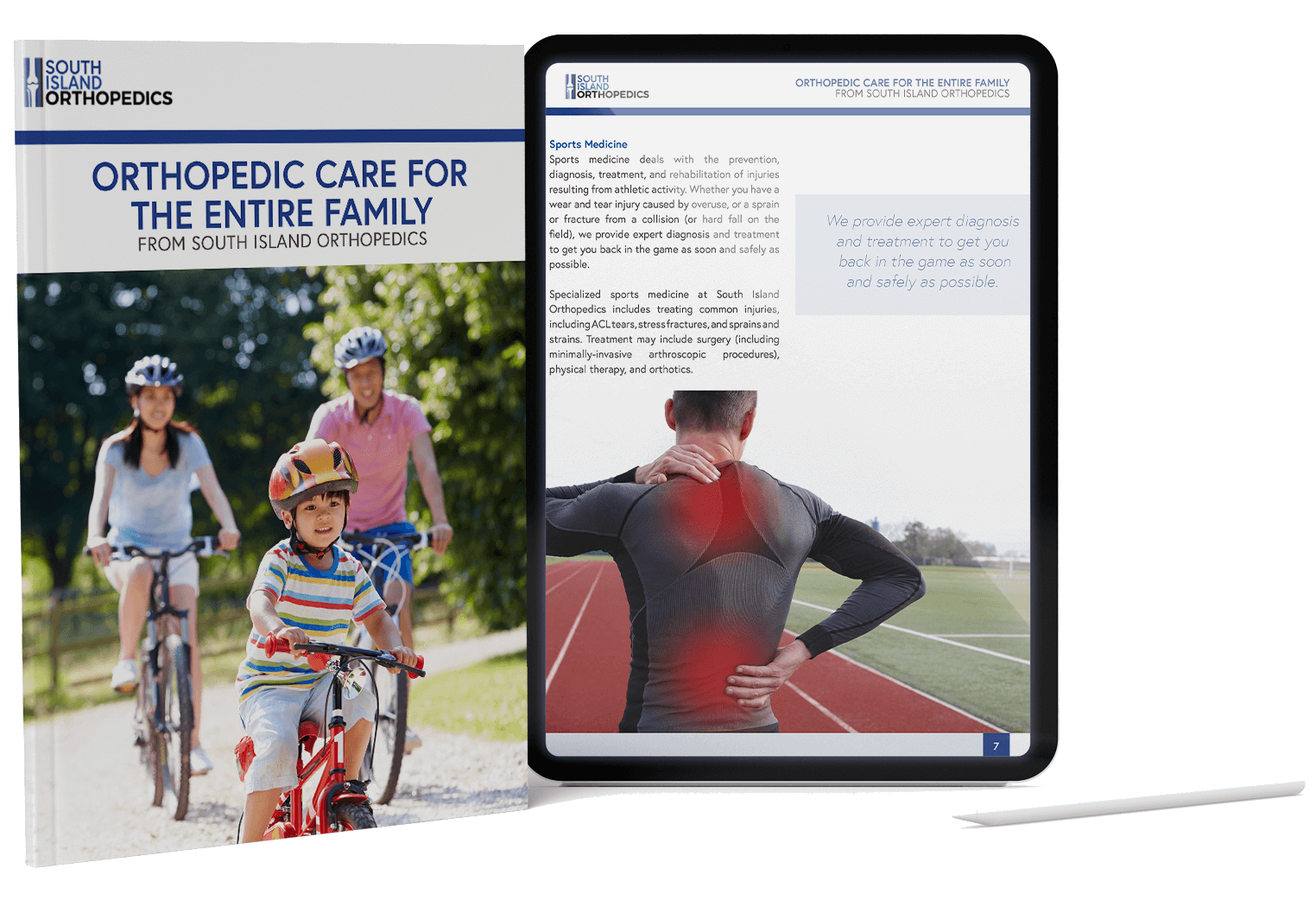The Connection Between Posture and Upper Body Pain
Chances are your mother often told you to stand up straight and stop slouching. She may have said you look sloppy or lazy or that sitting slumped in a chair was disrespectful.
Well, as usual, mom was right — maybe not about the lazy and disrespectful part, but she was spot on about the importance of good posture. Posture, or how you hold your body while you’re sitting or standing, is key to maintaining good spinal alignment. When your body is in alignment, you put less strain on your bones, muscles, ligaments, and tendons. This means less risk of problems like upper body pain, as well as conditions like herniated or bulging disks, arthritis, and more.
At South Island Orthopedics, our team of specialists is experienced in diagnosing and treating posture-related problems like upper body pain. Don’t ignore the discomfort. Pain is your body’s way of getting your attention to tell you something is wrong, and even if your condition is the result of a lifetime of poor posture, we can help you find relief and get back to doing the things you love.
How Posture Can Cause Upper Body Pain
The spine has three natural curves: cervical (inward curve at the neck), thoracic (outward curve at the upper back), and lumbar (inward at the lower back). Good posture maintains these curves, preventing unnecessary strain on the bones, ligaments, and muscles of the back, shoulders, and hips.
Humans are not born with poor posture. In fact, most of us are born with perfect posture. Watch a baby sit up unassisted, and you’ll notice that their back is perfectly aligned and straight and their head doesn’t tilt in any direction.
However, time and bad habits can affect your posture. Perhaps you spend hours hunched over a computer or use your shoulder to hold your phone anytime you have a conversation. Or maybe you were injured and have developed a way of walking or sitting that alleviates discomfort but misaligns your joints.
Regardless of why you have poor posture, the result is the same: Pain and discomfort due to excessive wear and tear on the joints and soft tissue in your back, neck, and shoulders. When your spine isn’t properly aligned, the muscles and ligaments in your neck and back have to work harder to support your body, even when you’re sitting still.
This extra work can result in inflammation that causes upper body pain, as well as extra wear and tear on joint surfaces, which eventually may lead to arthritis, shoulder impingement, or other concerns.
Sitting and Standing Posture Guidelines to Prevent Pain
In many cases, upper body pain can be alleviated by simply correcting your posture. When you focus on sitting and standing straight, your joints remain in alignment, which reduces the stress and strain on the back muscles and the ligaments holding the spinal joints in place. Good posture also reduces excess wear on joint surfaces, which helps prevent arthritis.
So what is “good posture?”
When standing:
- Stand with your shoulders back and your head in line with your body.
- Pull your abdomen in.
- Keep your feet shoulder-width apart, with most of your weight on the balls of your feet.
- Avoid locking your knees.
- Let your arms hang naturally at your side.
One easy way to improve your posture is to visualize a straight line passing right through your body from the floor to the ceiling and pulling you upward. Try to imagine that you’re making space between your ribs and pelvis without standing on your tiptoes.
When sitting:
- Sit with your feet flat on the floor.
- Position your knees at or below hip level and your ankles in front of your knees.
- Lean your back against the back of the chair.
- Align your head and neck with your torso.
- Relax your shoulders.
To reduce the risk of pain, avoid sitting in the same position for too long (try a standing desk at work) and try not to cross your legs.
Upper Back Posture Exercises to Relieve Back Pain
Maintaining good posture can help prevent back pain, but if you are already sore, a few simple exercises can help bring relief. Try:
Neck extensions: While seated, press your head back into the chair or your hands, and hold for 30 seconds; repeat.
Chest cross: Raise one arm to shoulder level and bend it at the elbow. Grasp the elbow with the opposite hand and gently pull across your chest. You should feel a stretch in your upper arm and shoulder. Hold for 20 seconds and release. Repeat three times on each side.
Shoulder blade squeeze: Sitting in a chair, rest your hands on your thighs. Keeping your shoulders down and chin level, slowly squeeze your shoulder blades together. Hold for five seconds, and release. Repeat several times.
Upper body stretch: Stand in a corner with your arms raised and hands flat against the wall. Put one foot in front of the other and bend that knee, listening forward. You should feel a stretch across your chest when you keep your back straight and your chest and head up. Hold the position for 20-30 seconds, and repeat several times.
Strengthening your core muscles can also help support good posture and relieve back pain. Incorporate exercises like crunches, planks, and leg extensions into your normal routine to support a stronger core.
When to See a Doctor at South Island Orthopedics
Upper body pain is common, and there are likely to be days when you feel more sore or stiff than normal. If changing your posture and incorporating exercise don’t help, it’s time to see an orthopedic specialist to determine whether more aggressive intervention is needed.
If you live anywhere on Long Island, you have several South Island Orthopedics locations to choose from. When you make an appointment with one of our providers, you can enjoy everything from diagnosis to treatment to recovery, all under one roof. We even offer urgent care services when you need to see a doctor right away.
So don’t wait until your pain becomes unbearable. Schedule a visit today.
South Island Orthopedics’ Guide to Bone and Joint Care

Posted in: General & Pediatric Orthopaedic Care, Neck/Back & Shoulder



